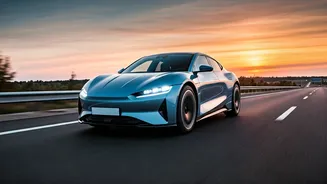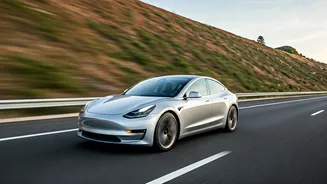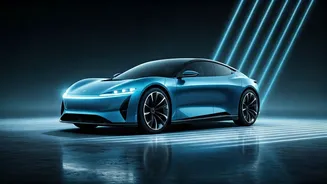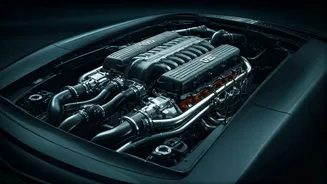AI and Automotive
Artificial intelligence is poised to drastically alter the automotive industry, and it has already begun to. AI is powering advanced driver-assistance
systems (ADAS) by processing data from sensors, cameras, and radar to improve the safety and efficiency of driving. This includes features like automatic emergency braking, lane-keeping assist, and adaptive cruise control. Further AI is being integrated into infotainment systems. AI algorithms help provide recommendations, voice control and personalized experiences. Moreover, the evolution of autonomous vehicles, reliant on AI for navigation and decision-making, signals a significant change in how people will interact with cars in the future, ultimately ushering in a transformative period for mobility.
Battery Technology Evolution
The shift towards electric vehicles (EVs) has pushed the advancement of battery technology to the forefront. Innovations such as solid-state batteries, with the potential for higher energy density, faster charging times, and enhanced safety, are emerging as a game-changer. These batteries promise to address the current limitations of lithium-ion batteries and overcome concerns about range anxiety and charging convenience. Besides, ongoing research into alternative battery chemistries like sodium-ion and lithium-sulfur offers additional avenues for boosting energy density. These advancements have implications not only for electric vehicles but also for hybrid models, ultimately promoting a more sustainable and efficient automotive ecosystem.
Advanced In-Car Systems
The interiors of modern cars are rapidly becoming hubs of technological innovation. Digital dashboards, large infotainment displays, and integrated connectivity are becoming standard, offering drivers and passengers a wealth of information and entertainment options. Head-up displays (HUDs) project critical driving information onto the windshield, and therefore into the driver's line of sight, while advanced driver-assistance systems (ADAS) provide an extra layer of safety. The integration of advanced features such as gesture control and voice recognition enhances the user experience. All these technological advancements contribute to making the driving experience safer, more convenient, and more connected.
Connectivity and Integration
Connectivity plays a vital role in transforming the automotive industry, with cars becoming increasingly integrated with the digital world. The integration of smartphones through platforms such as Apple CarPlay and Android Auto allows for seamless access to navigation, music, and communication. Over-the-air (OTA) software updates make it possible to improve and update vehicle software and features without physical visits to service centers. Further vehicle-to-everything (V2X) communication technologies promote vehicle-to-vehicle (V2V) and vehicle-to-infrastructure (V2I) communication, which aims to improve road safety, traffic flow, and operational efficiency. The integration of connected services enhances the driving experience and also lays the groundwork for smart cities and autonomous transportation systems.
Future of Driving
Looking ahead, the automotive industry appears to be undergoing a period of transformational change, driven by technological breakthroughs and shifts in consumer preferences. The convergence of AI, battery technology, and connectivity is leading to the development of self-driving vehicles, offering the potential to revolutionize how people travel. Simultaneously, the focus on electric and hybrid vehicles reflects the growing environmental consciousness and the push for sustainable mobility. The trends towards shared mobility, car-as-a-service models, and the integration of technology into every aspect of driving indicate a future where vehicles become smarter, more efficient, and fully integrated into the fabric of daily life.













